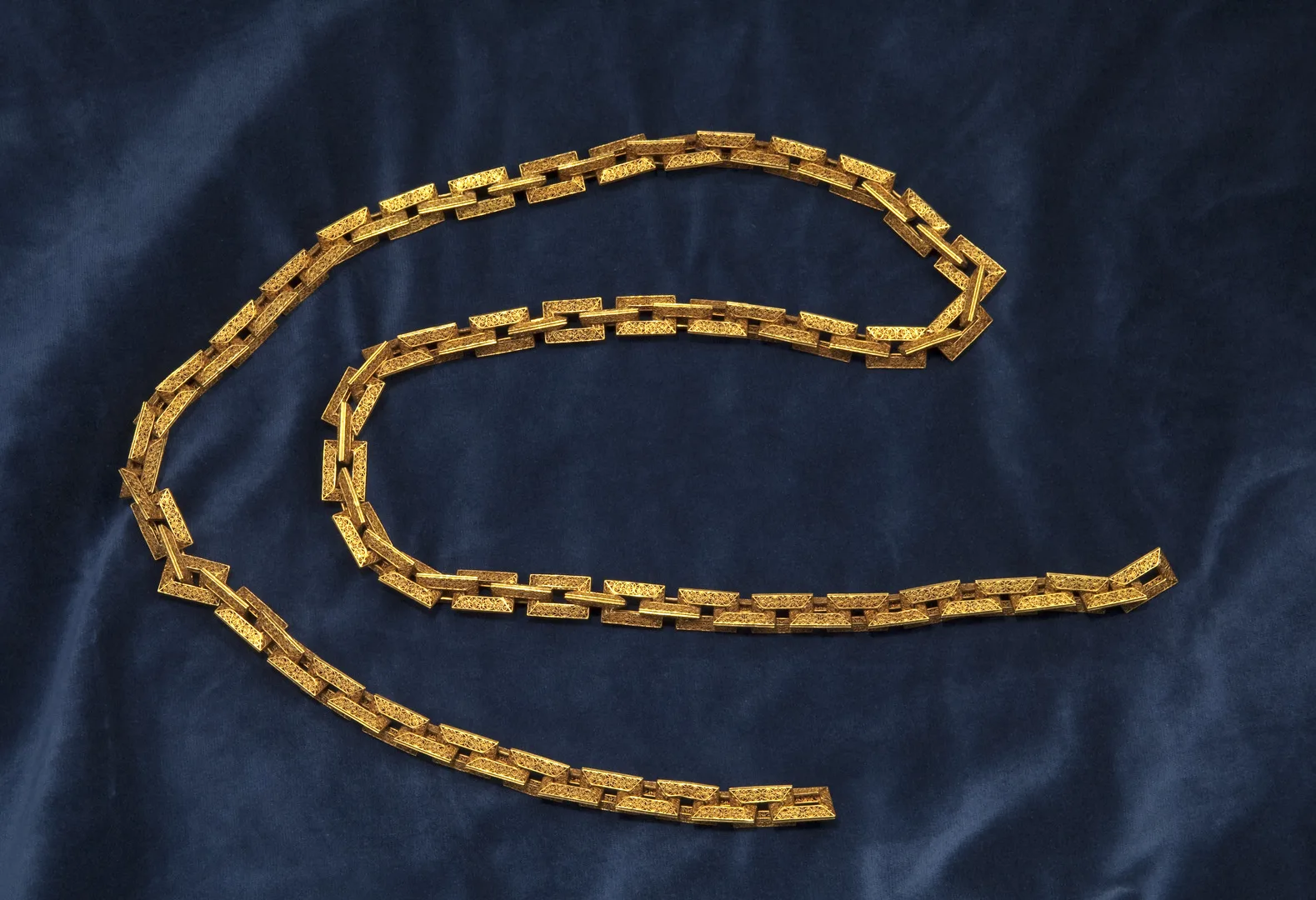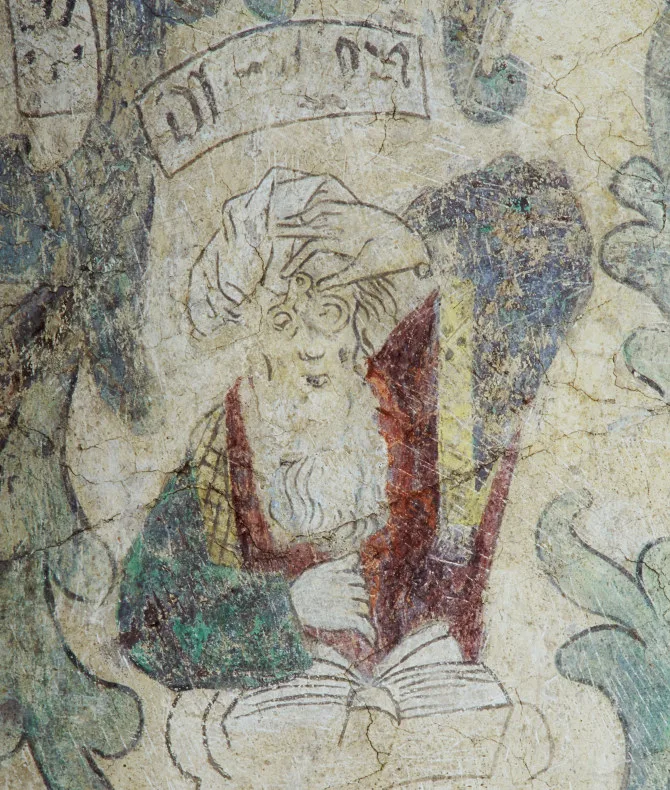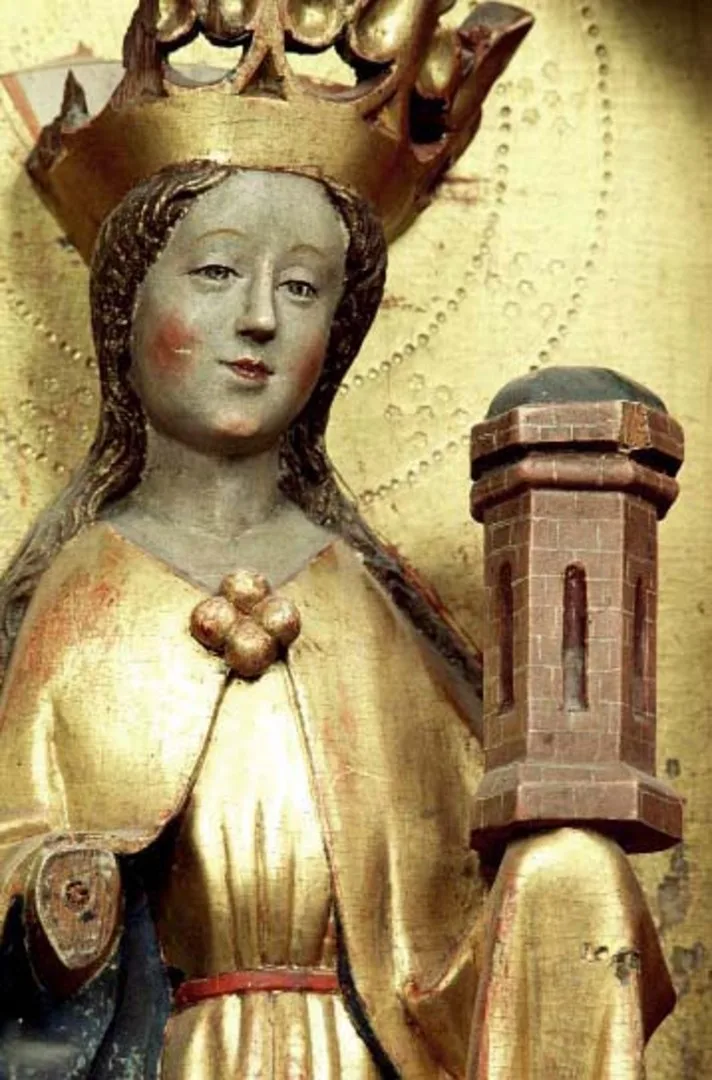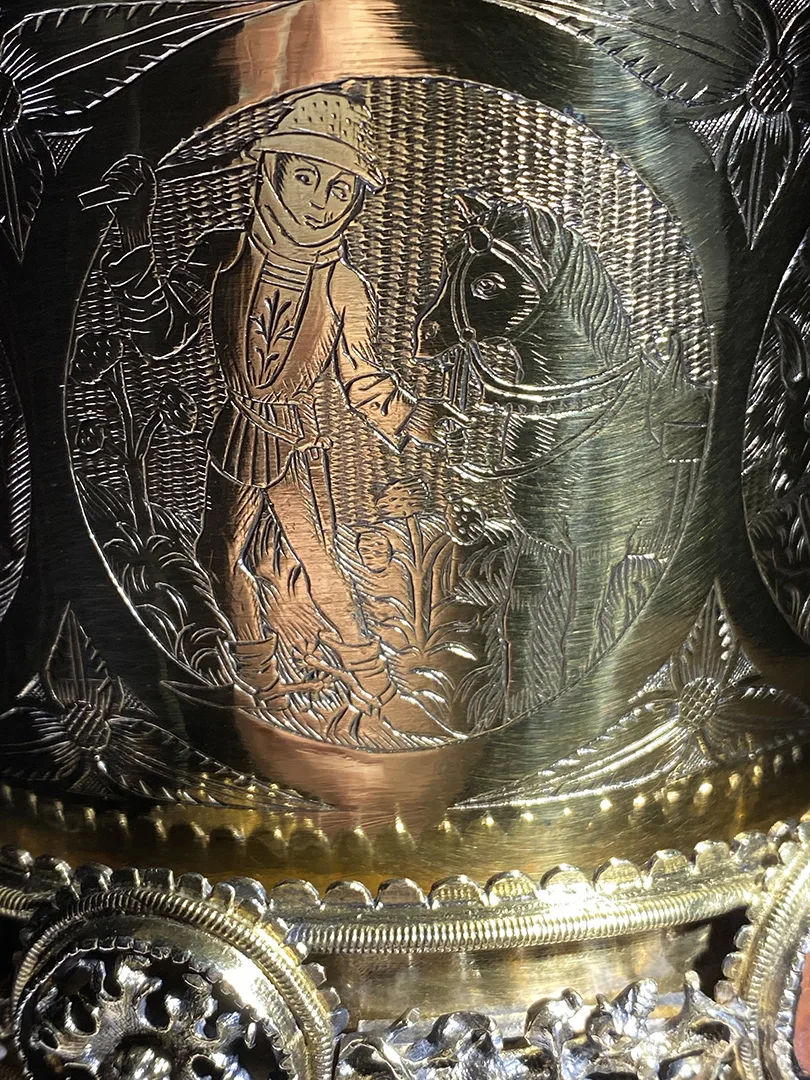The Last Abbess of Clare
Viking Age
AD 800 – AD 1100
Middle Ages
AD 1050 – AD 1520
Modern Age
AD 1520 – AD 2025
In medieval Stockholm there were three monasteries: two for men and one for women. The latter, a convent of the Poor Clares, was located on the outskirts of the town and was probably founded in the 1280s by King Magnus Ladulås. The order was established by Saint Clare of Assisi, a disciple of Saint Francis, who founded her own convent in Assisi in the early 13th century.
A position of female authority
The head of a nunnery was known as an abbess. In images she was often represented in the religious habit of the order, holding the pastoral staff symbolising her office. The abbess governed the convent both in spiritual and temporal matters, occupying a position of authority that was exceptional for women in the Middle Ages.

Door of an altarpiece
Likely from St Clare's church, Stockholm.
One depiction of Saint Clare appears on the doors of an early 16th-century altarpiece, probably originally belonging to Klara convent in Stockholm. The saint is shown in monastic habit, holding a monstrance in her left hand and a staff of office in her right.
The altarpiece doors may have been present in the convent during Anna Reinholdsdotter’s tenure as abbess. They were later transferred to Danviken Chapel and eventually entered the collections of the Swedish History Museum.
War around the convent
Anna was the daughter of Reinhold Leuhusen, churchwarden of Storkyrkan and a prominent burgher of Stockholm. It was increasingly common at this time for members of the urban elite to enter monastic life and to attain high positions within religious houses.
Two objects in the Museum’s collections – a rosary and a gold chain – are thought to have belonged to Anna Reinholdsdotter. The rosary consists of fifty-five beads used to aid prayer: at each silver bead an Ave Maria would be recited, and at each gold bead a Pater Noster. The so-called Leuhusen chain is almost one and a half metres long and composed of ninety-seven finely wrought filigree links. Both objects date from the 1530s and may have been used by Anna after her period as abbess.

The Leuhusen gold chain
Made in the 1530s, possibly in Stockholm.
On view at Historiska museet in the exhibition Guldrummet
The year of her birth is unknown, but she must have been an adult in 1508 when she is first recorded as abbess of Klara convent. The situation of the house was difficult during her leadership. Repeated conflicts between Sweden and Denmark in the 15th and early 16th centuries resulted in the burning of Norrmalm, the district in which the convent lay, on several occasions. In 1508 Anna addressed a letter to the city magistrates appealing for alms on account of the convent’s dilapidated state.
Alignment with the Danes
According to a later chronicle, the nuns of Klara sided with the Danes during the hostilities of 1522. During the siege of Stockholm in that year, many burghers fled the city and some sought refuge within the convent. Anna, who was sister-in-law to the pro-union councillor Glorius Holste, and her fellow nuns allegedly signalled to the Danes that rebels were being harboured within the convent.
The last record of Anna as abbess dates to 1523, when she was obliged to dismiss the convent’s confessor. By 1525 a Sister Elin Thomasdotter is mentioned as abbess. The circumstances of Anna’s departure remain uncertain, though it is possible that Gustav Vasa’s accession in 1523 forced her resignation. In 1527 Klara convent was dissolved, its buildings demolished, and the sisters were transferred to the former Franciscan friary on Riddarholmen, which was converted into a hospital and house of the Holy Ghost.
A dramatic life
Anna was still alive in 1550, though by then she must have been of advanced age. Her life was shaped by the profound upheavals of her time: religious conflict and the dissolution of the monastic orders in Sweden. The rosary and gold chain associated with her, preserved today in the Swedish History Museum, serve as material witnesses to this dramatic biography and the epoch in which she lived.







